On the eve of the Feast of St Tortgyth, winter visited Rumwoldstow.
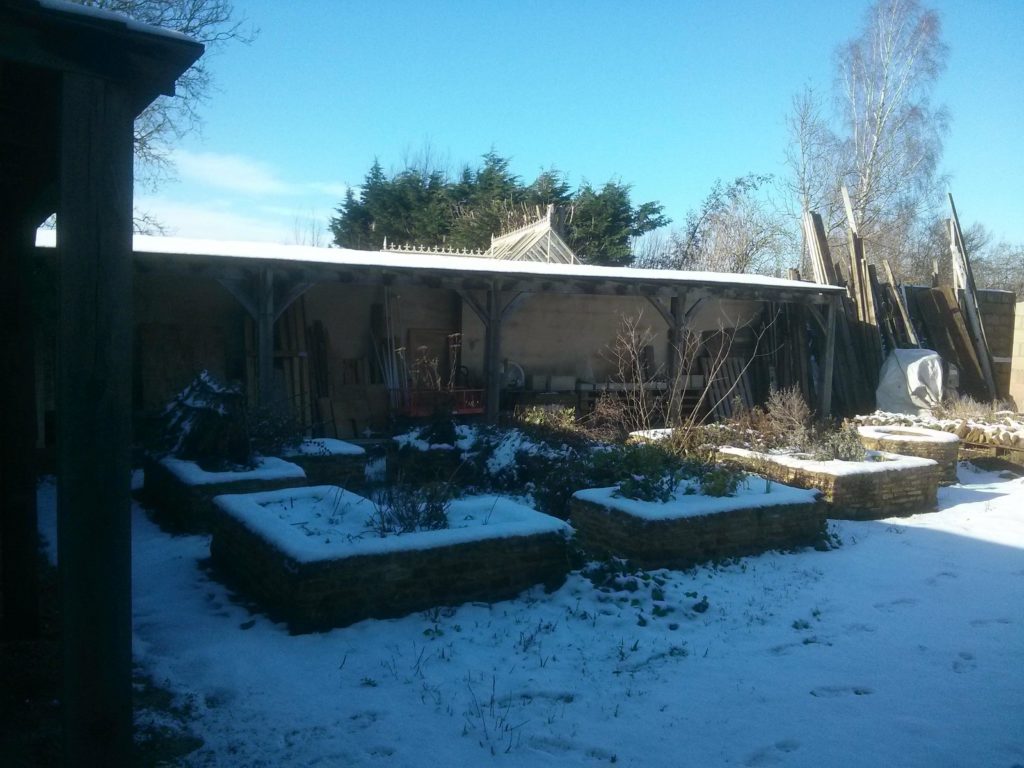
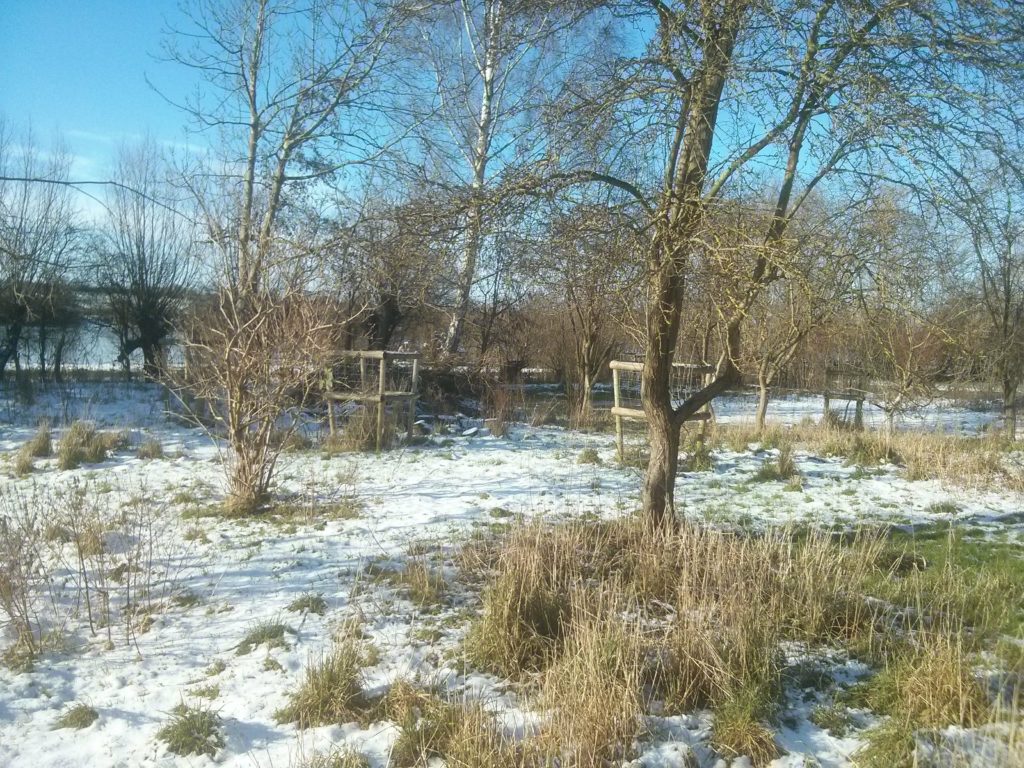
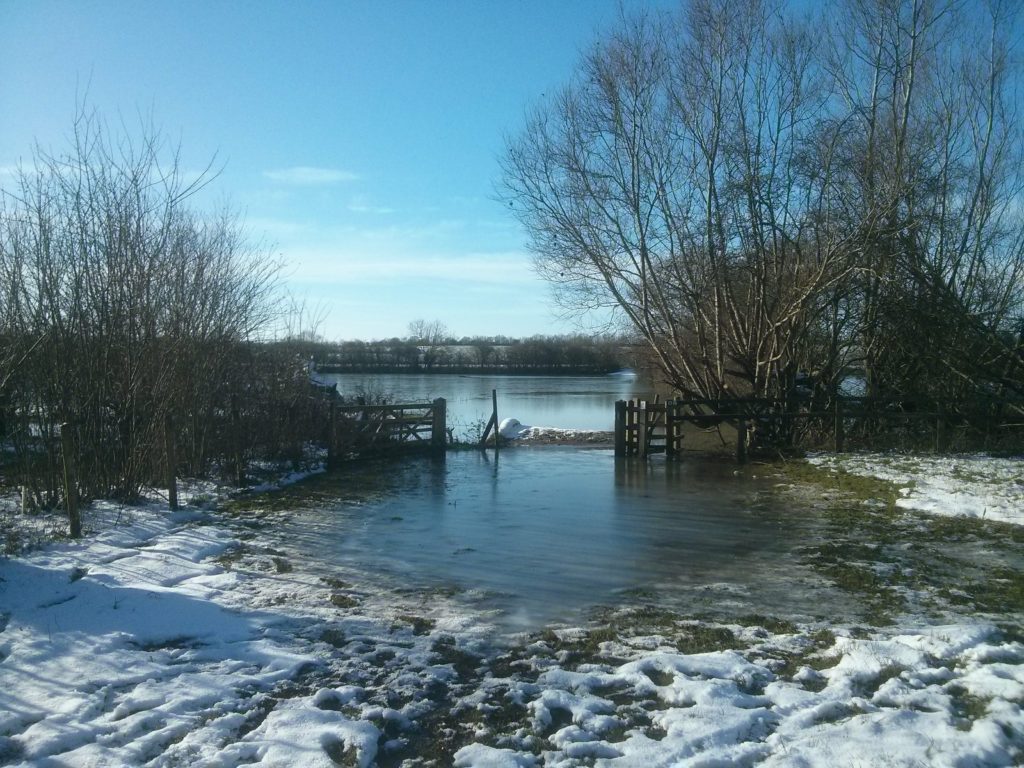
On the eve of the Feast of St Tortgyth, winter visited Rumwoldstow.



During the summer, I planted three braeburn seeds that had germinated in the apples (perhaps because they’d been shipped over from New Zealand in cold storage). And thus I embarked on the Quest for the Pippin of St Rumwold – to grow a variety of apple unique to Rumwoldstow. As apples don’t breed true, this will be a numbers game and will take probably five years to show results.
I wanted to try some British apples as being more likely to tolerate the climate and perhaps closer to traditional varieties, so collected seeds from various apples over the late summer and autumn. After October, British apples pretty much vanished from the shops, and I felt I had a pretty good number to be working with – if even one in ten germinates, I’ll have a lot of trees! I learned from t’internet that apple seeds need a period of cold to break their dormancy, and that 30 – 60 days in the fridge should do the trick.
I kept the seeds in plastic boxes, meaning they dried out which may not have been a good thing. On the 3rd December 2020, I gave them all about two hours soak in cold water, then drained them and laid them on moist kitchen towel in plastic boxes which I put in the back of the fridge. The plan is to leave them there until perhaps February 2021, checking them every week or so to make sure they aren’t dried out and in case any are germinating already, then take them out and see how many germinate.
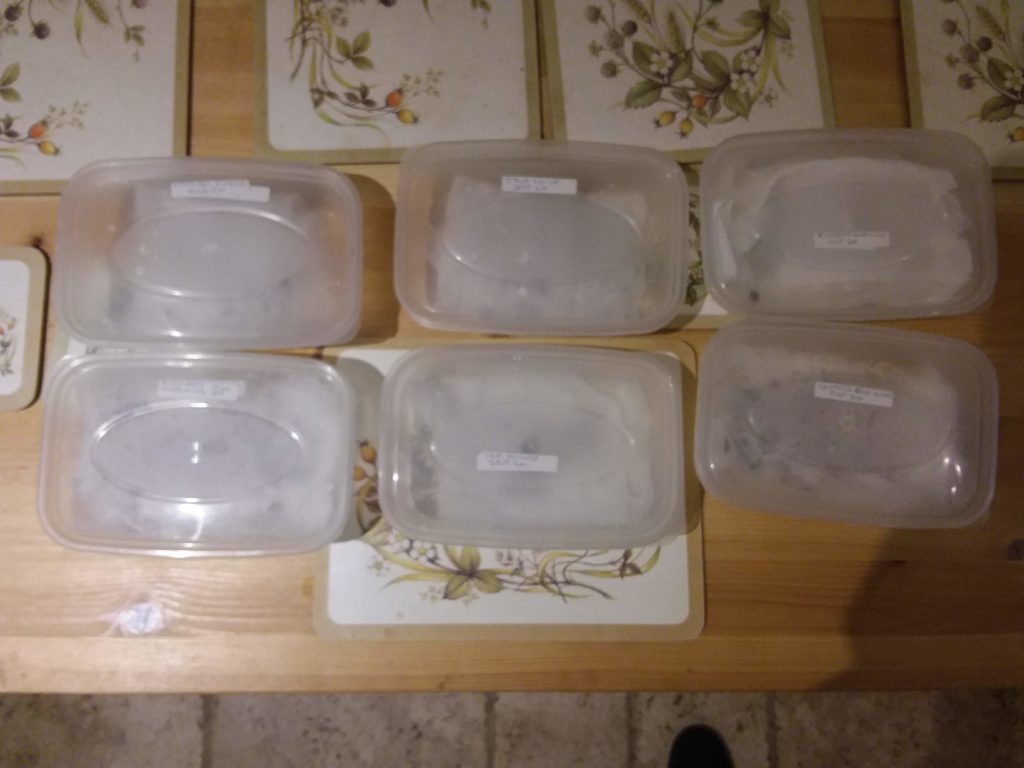
August 2020
Apples from behind the forge at Hauksby. The forge burnt down a month or two after I collected the apples, and I don’t know if the tree was damaged. The apples are an early variety, green and red, and good to eat.
August 2020
Discovery apples from Morrisons. I didn’t note whether these were British, but it seems likely.
September 2020
Gala apples from the Coop. Similarly, I didn’t note if these were British but that’s my guess as to why I chose them.
September 2020
Apples I took from a box outside somebody’s garden in Aynho. They looked like Coxes.
October 2020
Egremont Russets from Morrisons; British.
October 2020
Apples brought by my friend Emma from Scotland. She describe them as Cox-like.
I picked all the remaining medlars early in November, after they’d had a couple of frosts, and because I noticed they were starting to drop off the tree. They’ve spent a few weeks bletting in a box on the kitchen windowsill. I ate a few in a zoom meeting just to confuse my friends, and they were pretty good – I think people were slightly surprised when after eating one, I then had another! The other day I decided that it was really time to tackle the remaining dozen or so.
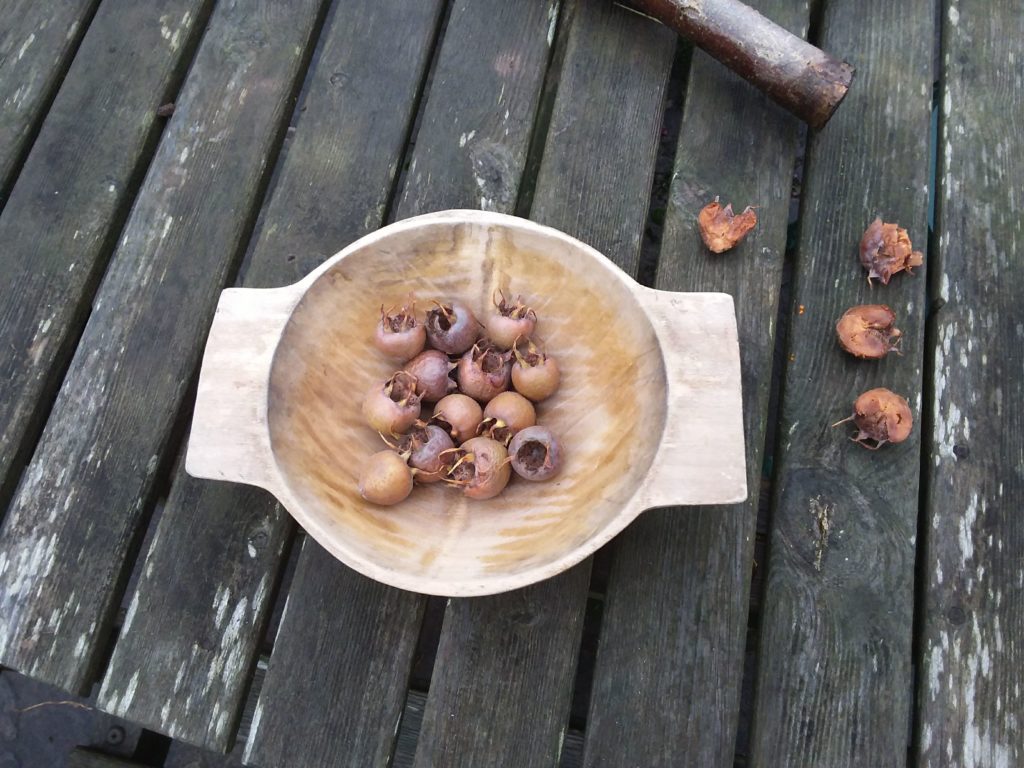
Inspired by a friend who has a slightly older medlar tree and larger harvest, I scooped out the flesh and pushed it through a sieve, to remove the seeds (not many per fruit but they are annoying) and make the pulp look generally less unappetising. This wasn’t a quick job, and I’m not sure whether with more fruit you’d just get used to eating them as they ripen? But I wanted to try them on my long-suffering partner who has so far refused to tackle the pulp in its unprocessed state – and to be fair, it is finicky to eat and doesn’t look like much.
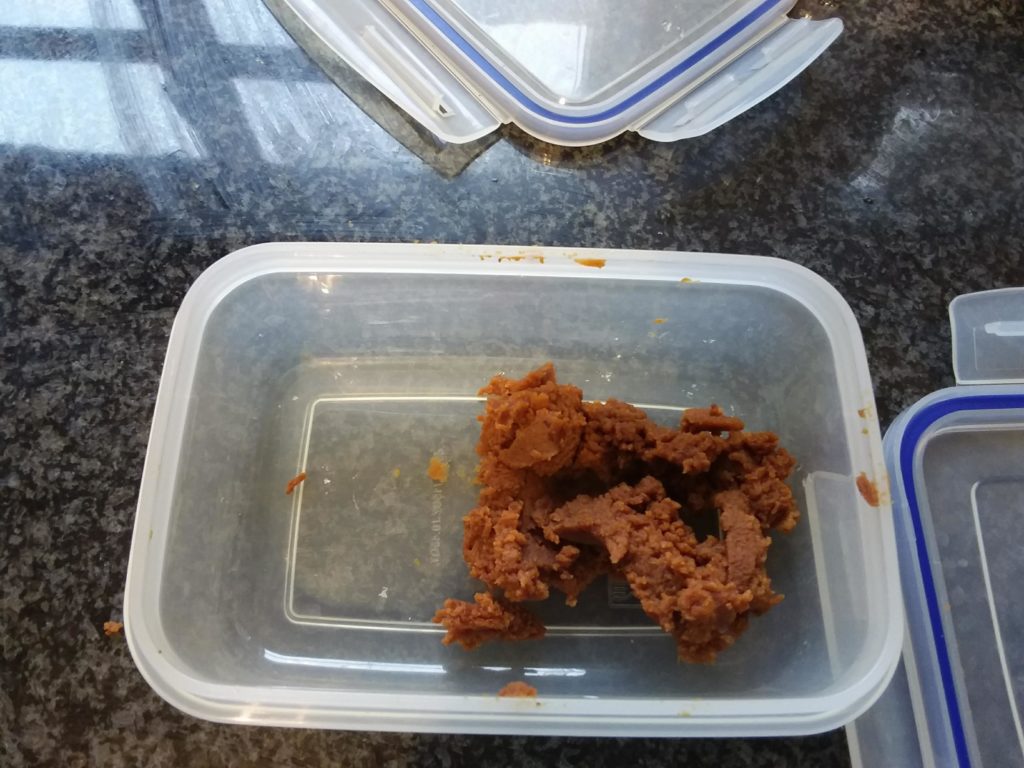
I ended up with a few tablespoons of brown mush. I have found medlars so far to have an unfamiliar, fruity but tangy flavour, and decided to soften the impact for my chosen victim by putting each portion of medlar puree on some tinned peaches, with a blob of vanilla ice cream by it. Unfortunately this turned out to be a bit of an own goal, in that the peaches and ice cream flavour smothered the medlar. I guess in small quantities it just isn’t that strong a flavour.
On the positive side, it was definitely inoffensive and I think medlar would be a good filling for a tart.
A few of the medlars were not yet bletted, the insides being mostly pale green. Next year, when I hope the tree will have more fruit (2 last year, 20-ish this year), I should have a better idea of how to judge blettedness from outer consistency.
The medlar tree is one of this year’s few orchard successes, as it’s been fully hardy and took no heed of the late frosts which destroyed the entire apple harvest. And it provides fresh fruit rich in vitamin C during November. While I can see why it fell from favour, I can also see it as a valued staple of the Anglo-Saxon orchard.
I harvested the last few carrots from the Rumwoldstow garden yesterday, as they’re starting to go manky in the ground, plus some beetroots.
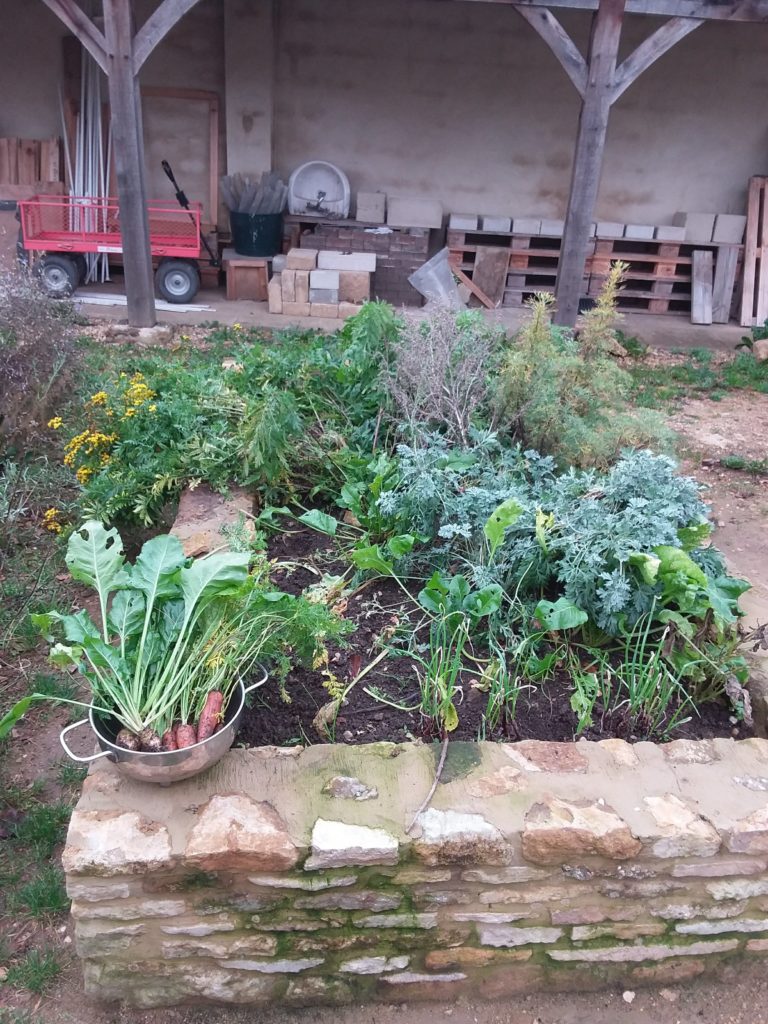
The carrots and beets have been surprisingly successful, given the bed was only built this year and the seeds planted in July. The white beetroots are very tasty and the leaves make an excellent spinach substitute. And the fact that they’re providing fresh green veg in November is amazing – even with the mild weather it’s impressive.
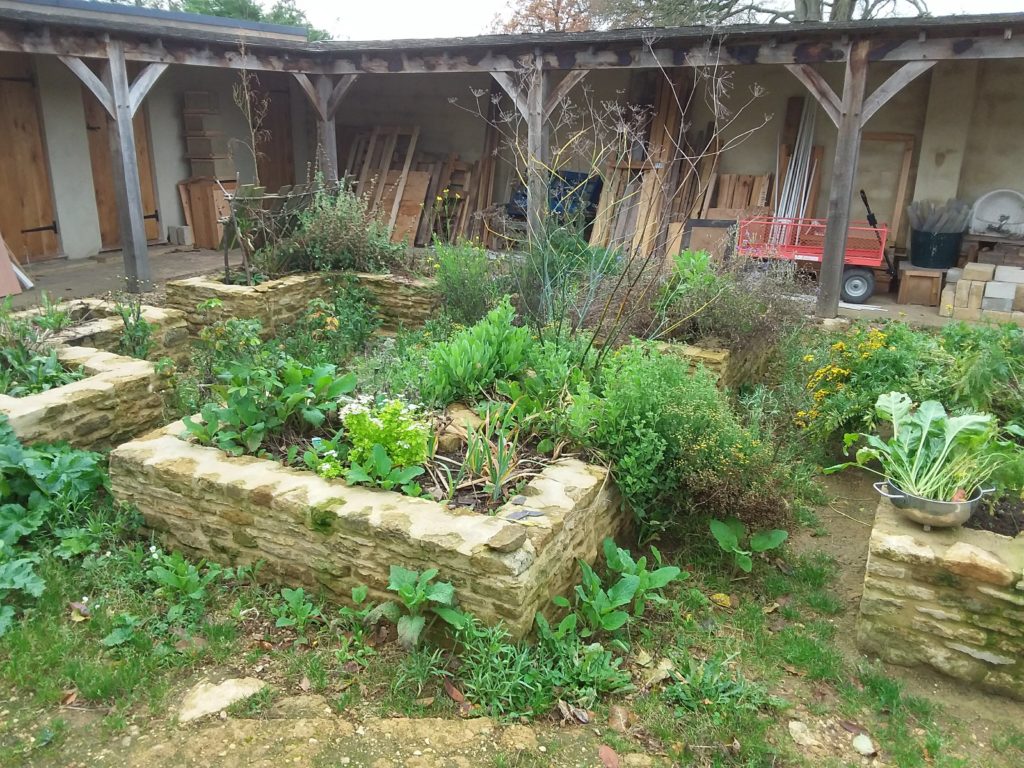
Oh, the garden is so full of weeds and overgrown…I have been reluctant to cut back flowers because they feed bees, but I really do need to start tidying things up. Except that right now I have No Time…so it’ll probably be a New Year job.
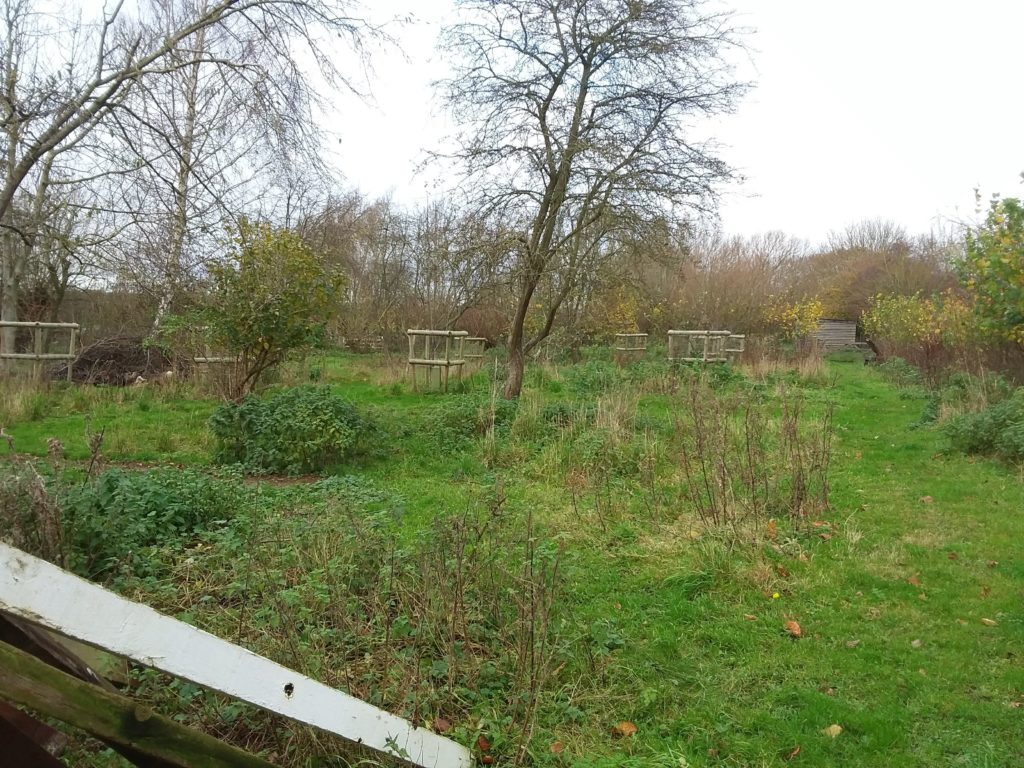
The orchard is now resting, I guess. The sheep are long gone, all the fruit harvested.
Back in 2019, Al bought me a packet of skirret seeds off the internet, and because I am not a confident gardener, the wonderful Freya germinated them and gave me back young plants. I planted these out round the garden, where they did OK and I gathered seeds and in the spring of 2020, germinated and planted out some more skirrets.
These plants are perennial and it was clear from the first-generation plants that I moved, that the roots take a while to develop. So I waited until now, November of 2020, to dig up one of 2019’s seedlings and try cooking the roots.
As I’d hoped, the plant was easily separated into three, and I replanted one section. However the roots were not that big.
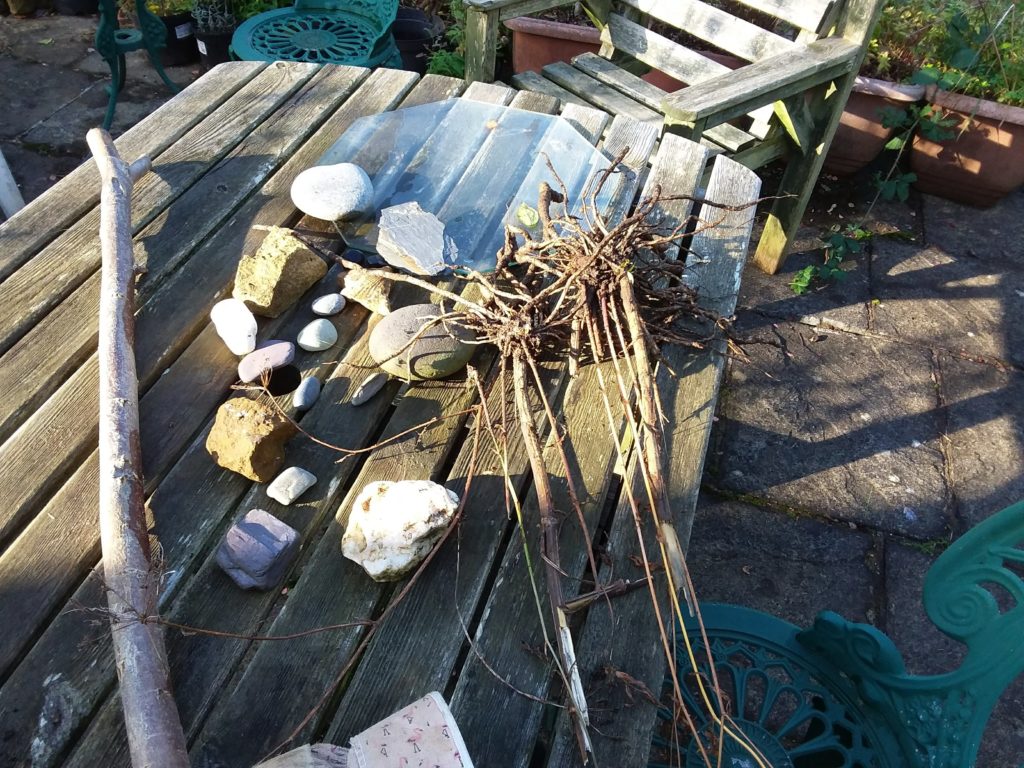
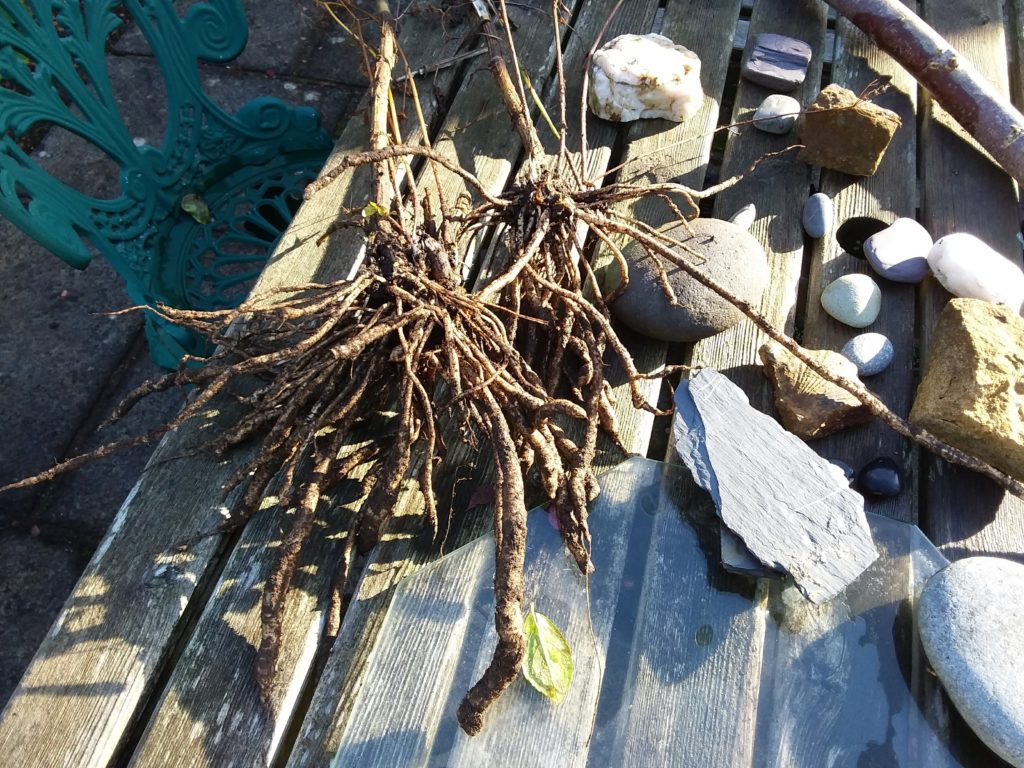
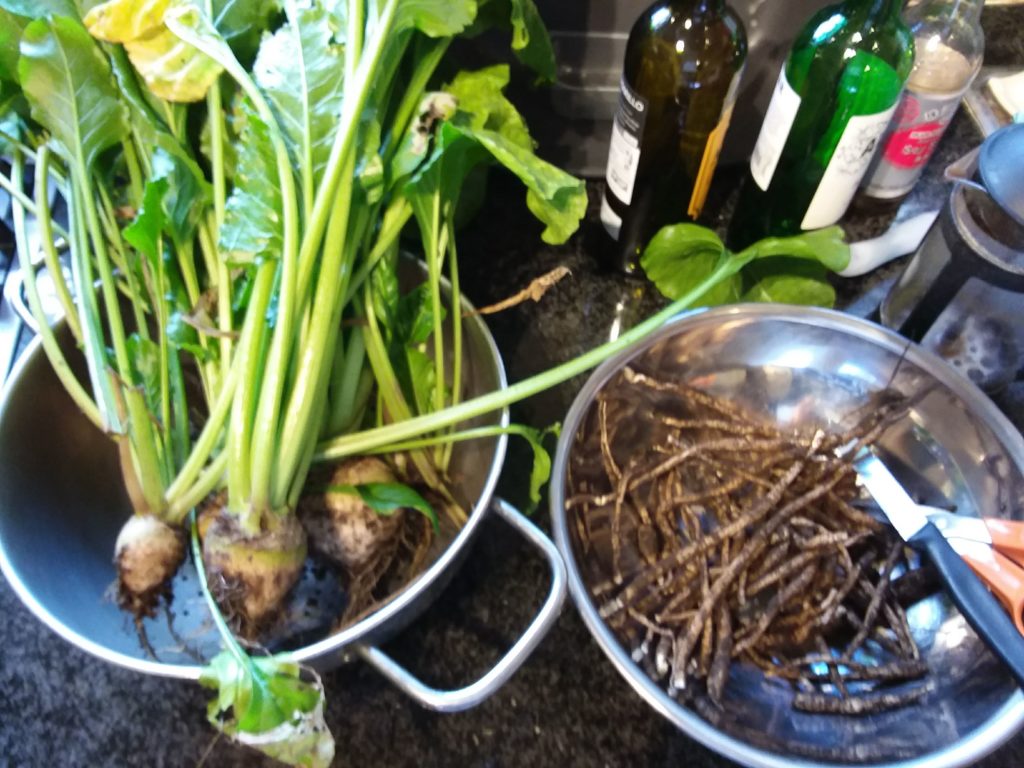
I cut off the larger roots and washed them, then scrubbed them with an old toothbrsh. The soil came away fairly easily but it wasn’t a quick job, with so many little roots.
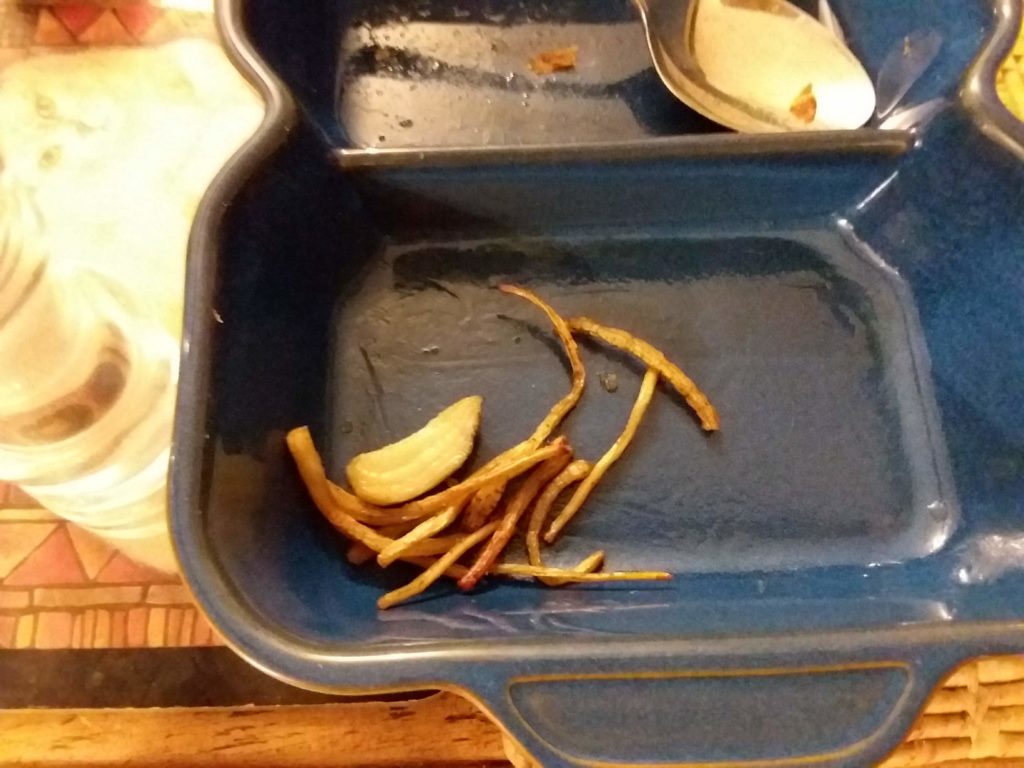
I roasted the beetroot and skirret in beef dripping, putting the beetroot chunks in first so they got half an hour or so, and the skirrets 10 – 15 minutes. The skirrets became very soft when cooked, and the texture was creamy and very pleasant, apart from the sinewy cores of the narrower roots. It’s pretty easy to eat the soft outer and leave the core.
The larger roots were soft all the way through. The flavour is indeed somewhat like parsnip but more peppery.
Our guest found a use for the cores – they can be used to floss your teeth!
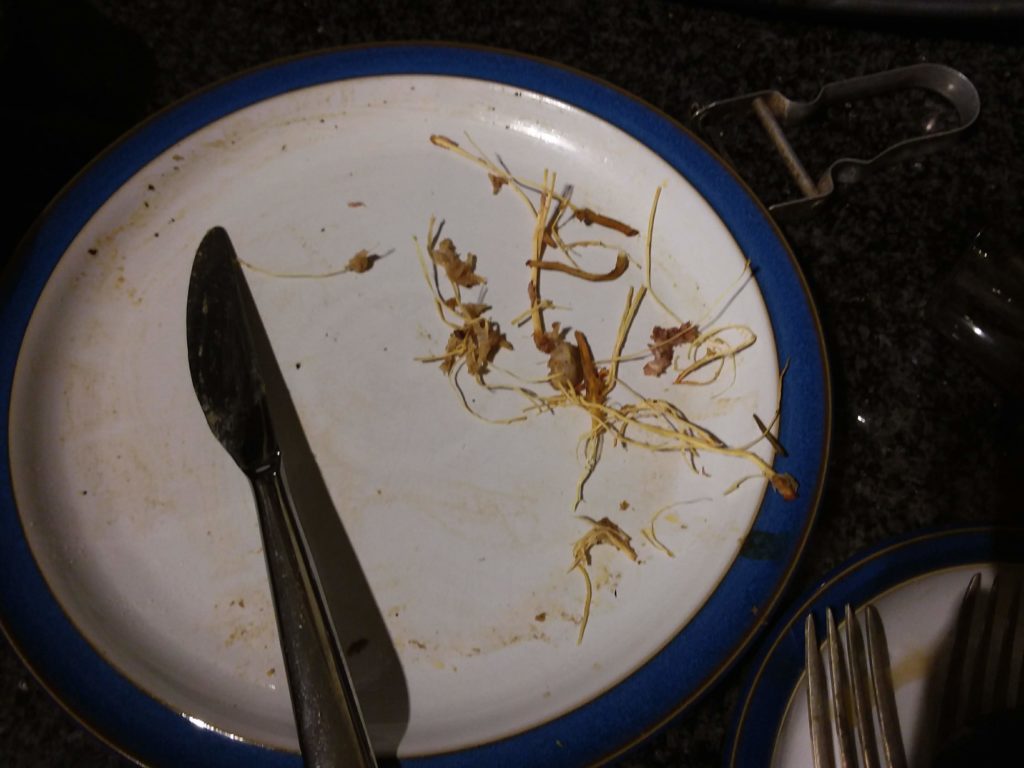
Overall I’d say skirret is a success, but you’d need much bigger plants to make a meal – I served these as a side dish. I hope that by next year, or the year after, the older plants will be more productive. A skirret bed clearly takes several years to establish.
Early November and it’s the second flood of the year, and still weirdly warm in the sun. The trick with coracling is to find a day when the water is high enough, the sun is out and the wind is light; any kind of breeze and the Bootle-Bumtrinket just skitters away over the water…
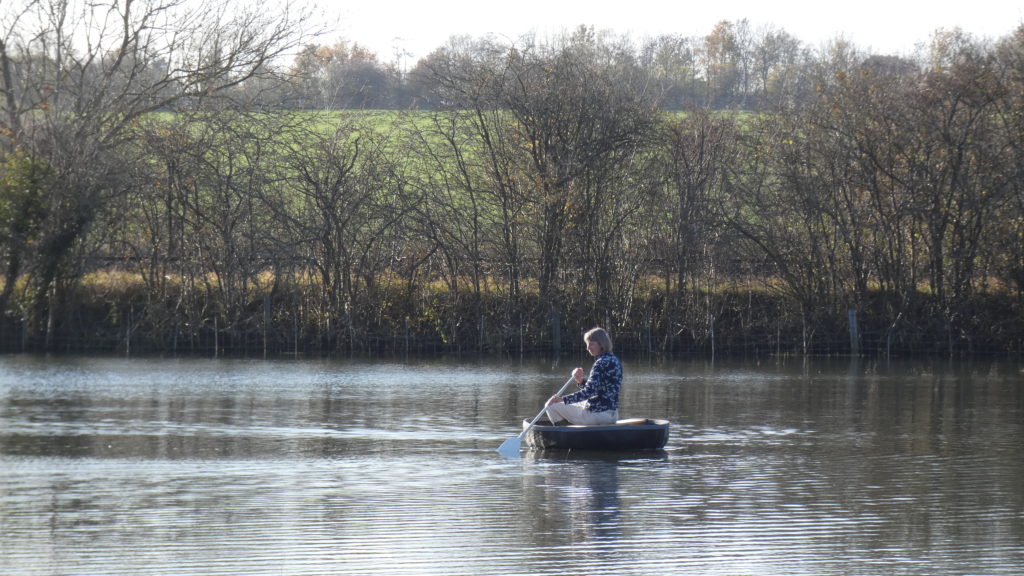
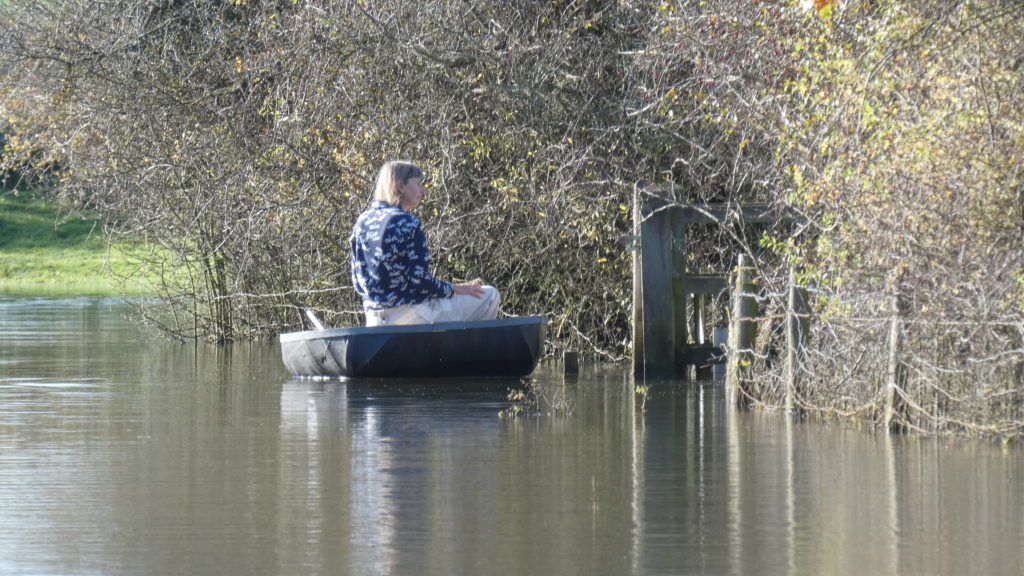
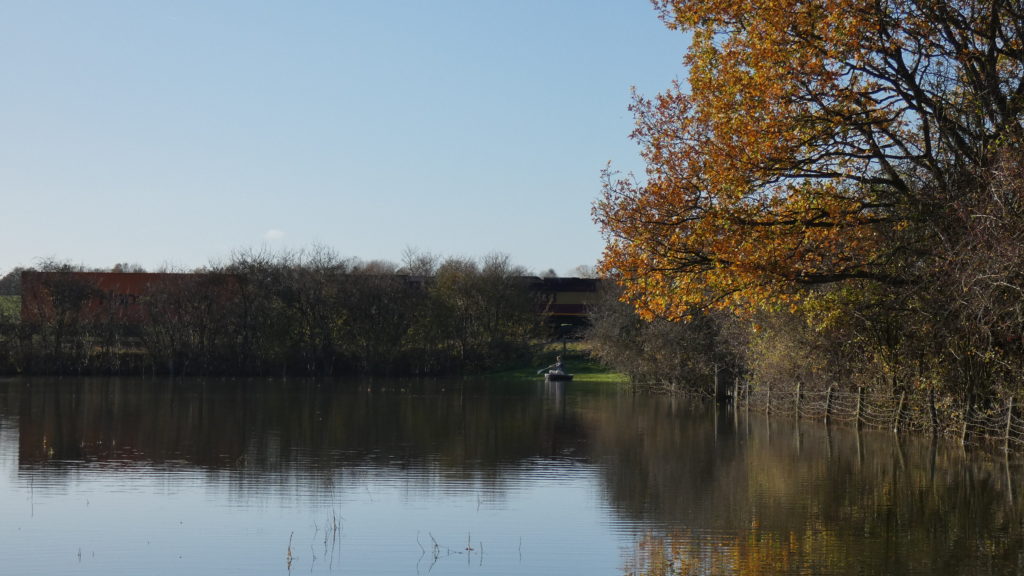
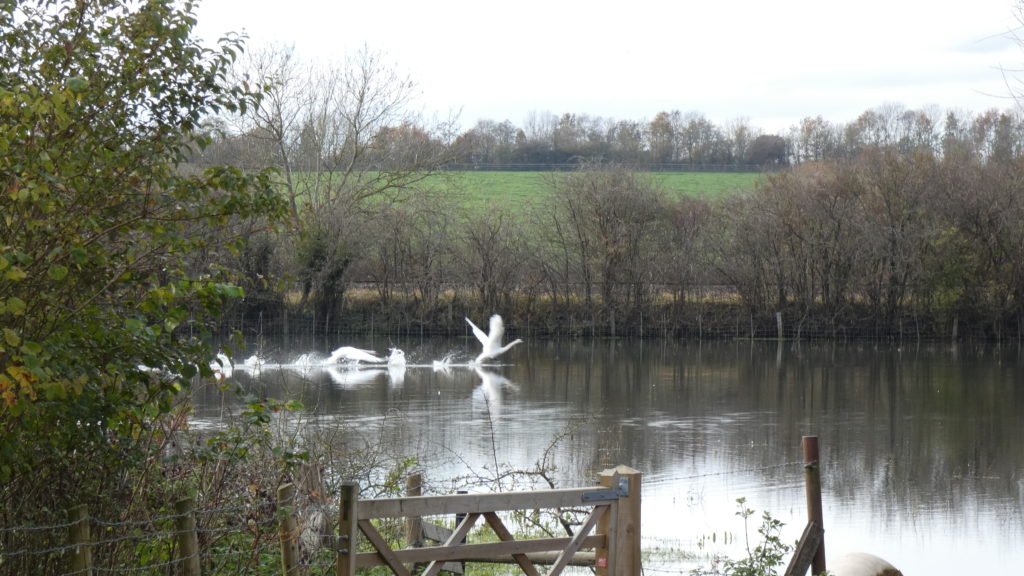
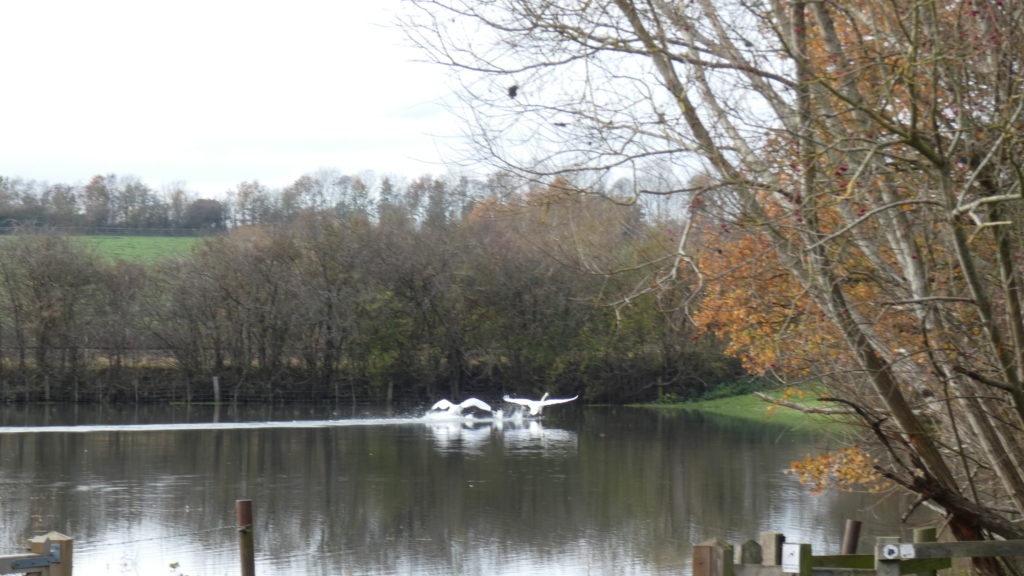
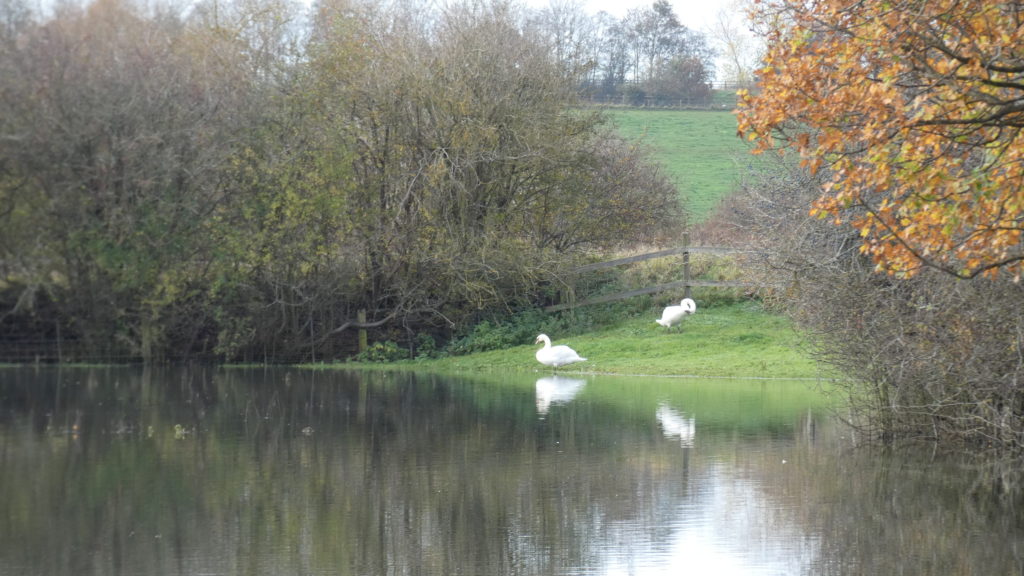
I failed to post a photo earlier, of the damson harvest. I thought we’d lost them all in the May frosts, but one hardy damson survived!
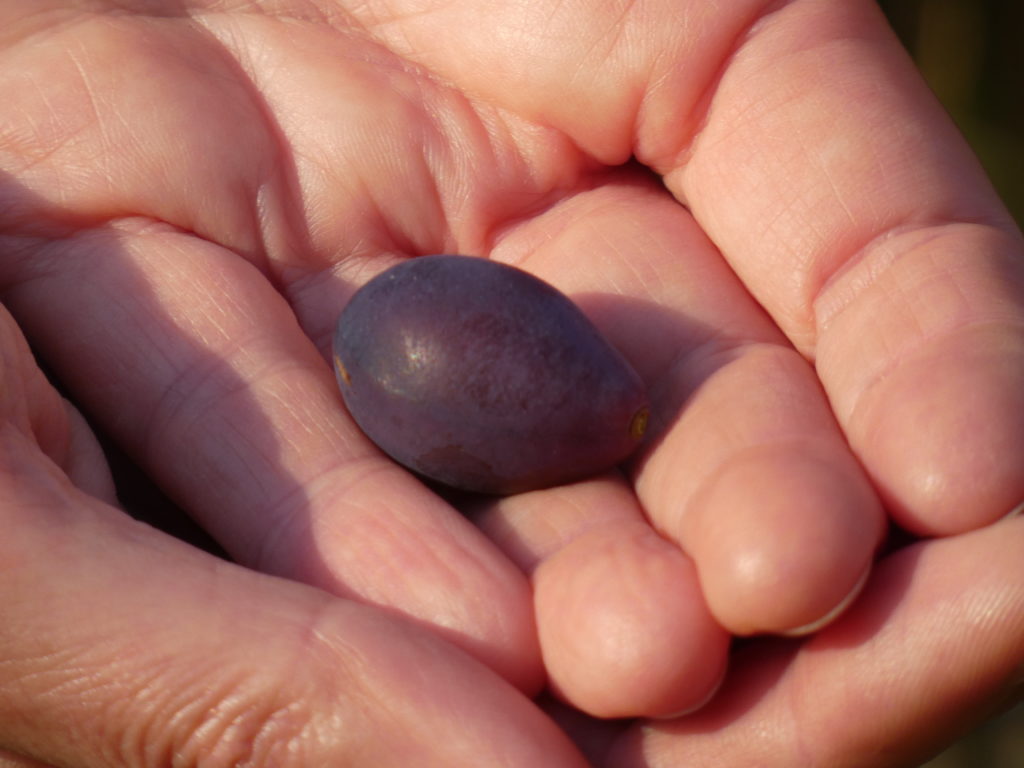
In October, the sheep returned for late grazing in the meadow and orchard.
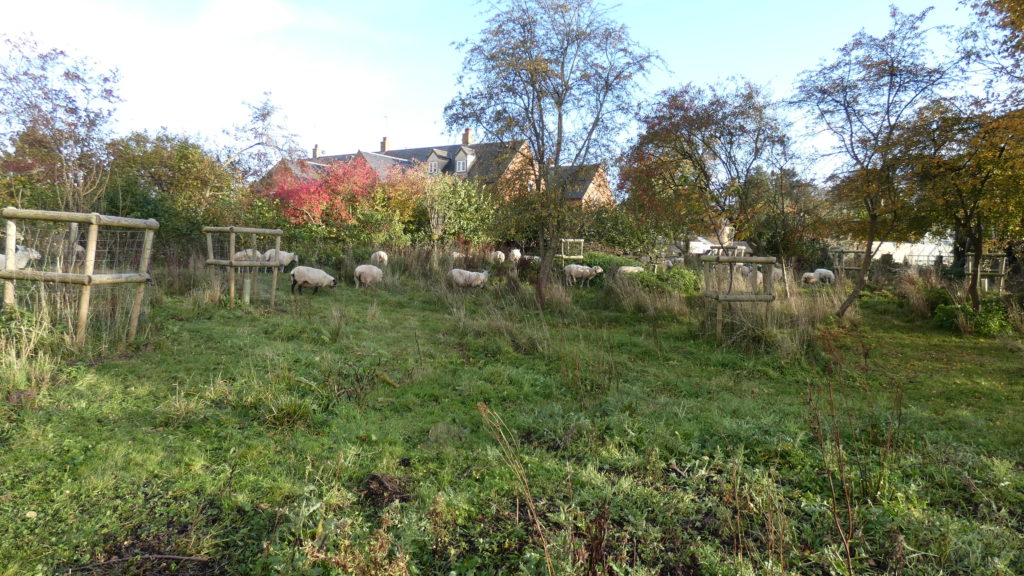
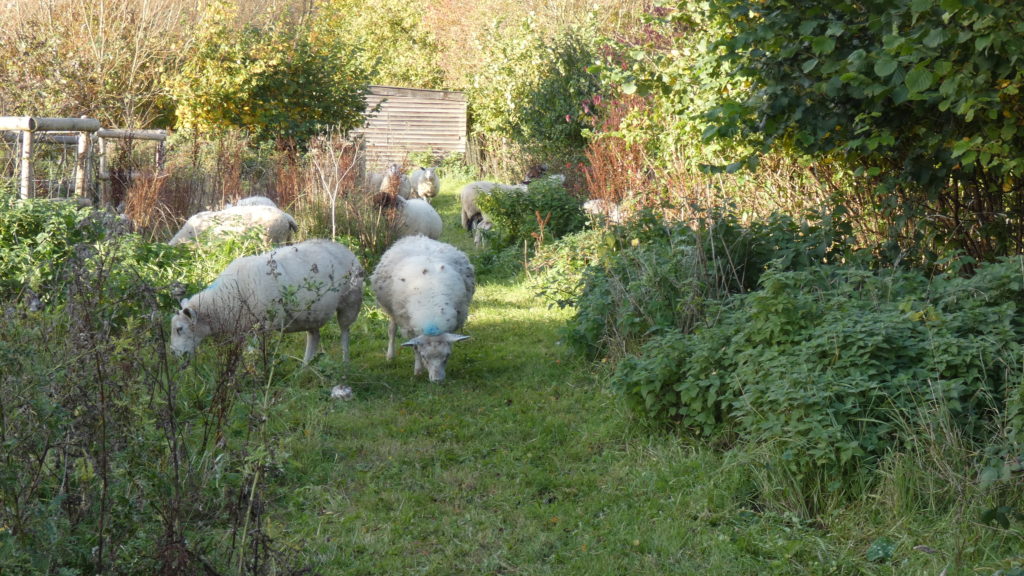
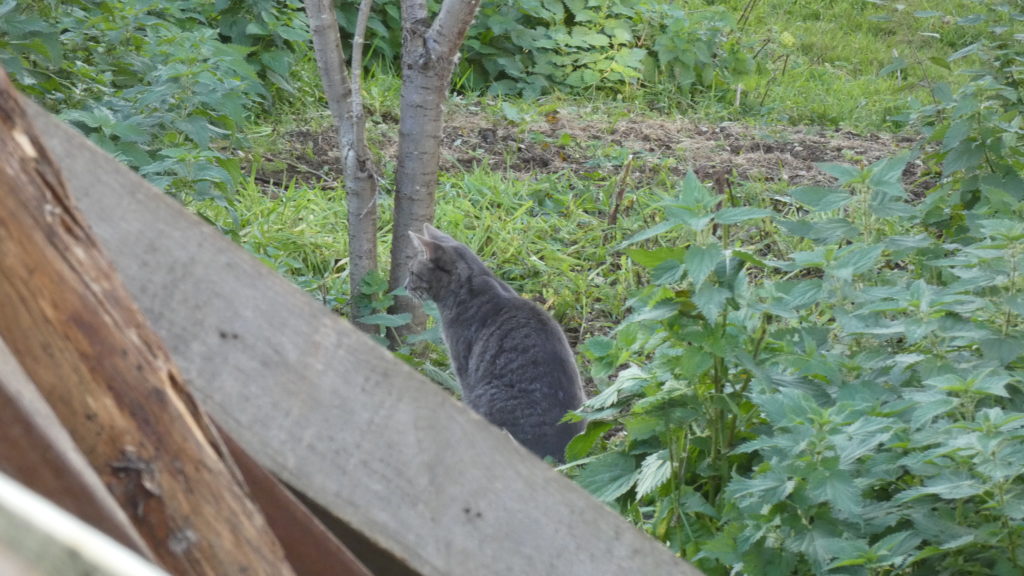
A good week after the rains, Lake Meadow is returning from Lake to Meadow, but there was just enough water still for one last paddle on a very pleasant sunny afternoon.
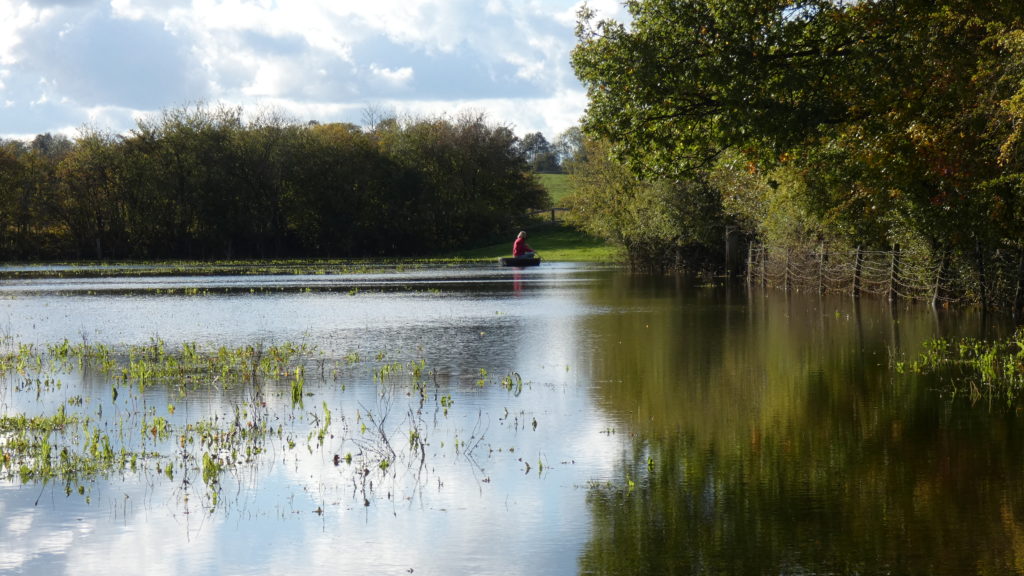
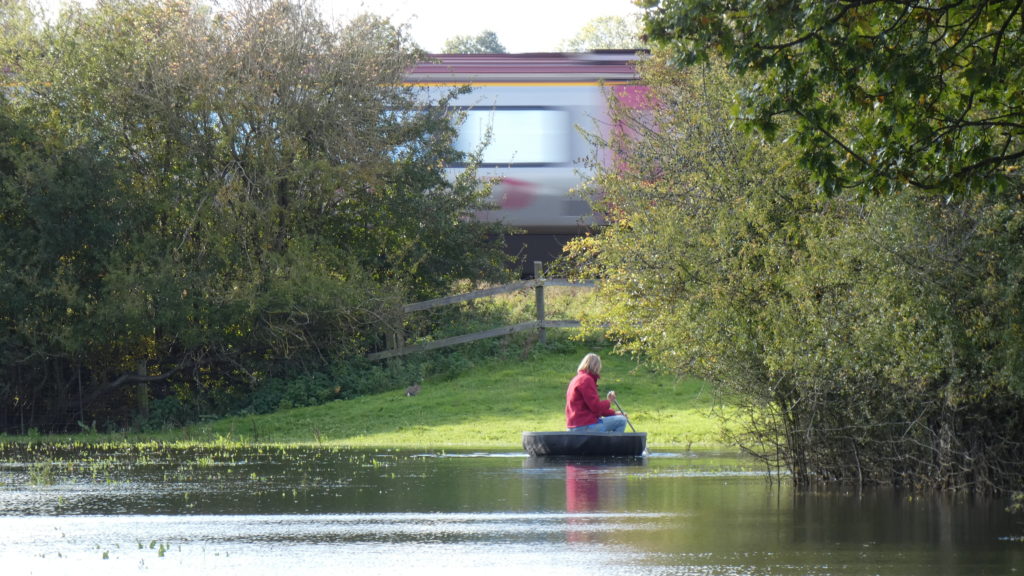
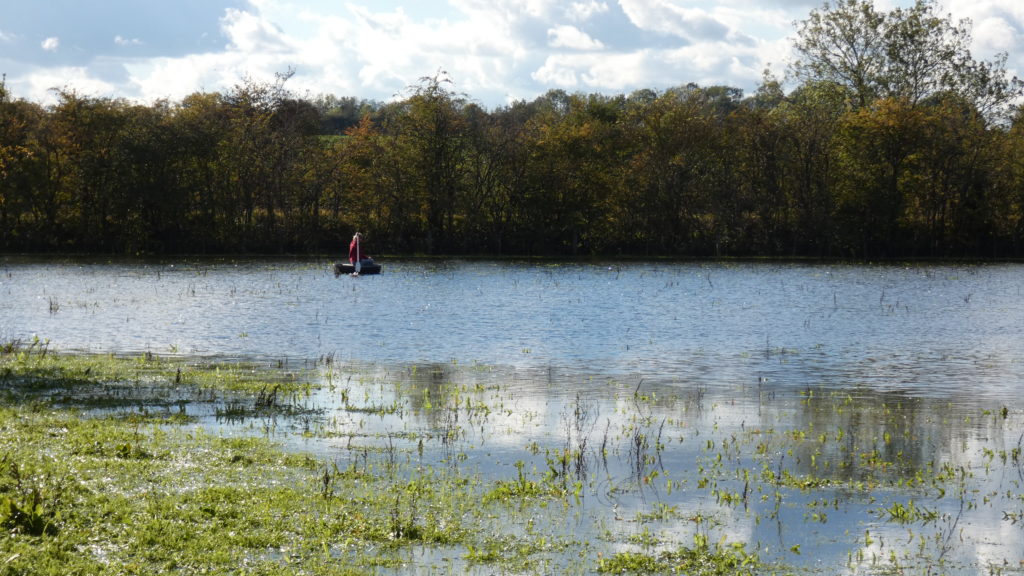
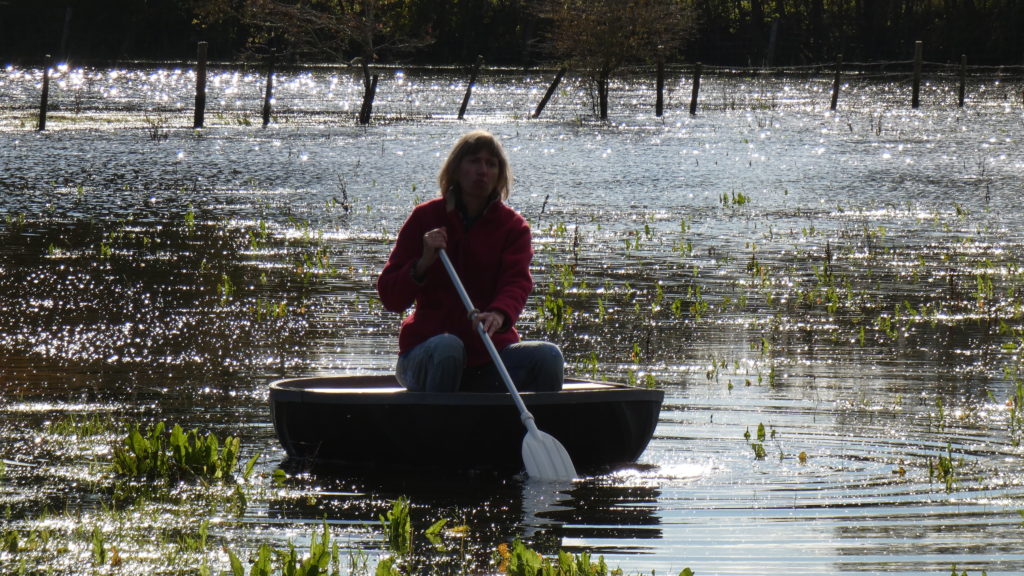

My paddling has improved, and I think I’m getting more propulsion, more reliably, for less effort. However, as soon as the breeze picks up, the coracle goes with the wind, and the gentle brushing of the grass and docks against the hull was enough to overcome my paddling – I had to use the paddle as a pole instead, to propel the Bootle-Bumtrinket along in the shallower parts. Even the footpaths, which are worn lower, were too shallow in places – deep enough for me to float, but too much resistance from the grass.
Alas! No more paddling until the floods return! At least it means I can put a positive spin on the flooding as well as worrying about the house…
Hjalmar the Brave came up to try their hand at coracle paddling. The water has gone down enough that we could wade out to the bridge, with care, and launch Bootle-Bumtrinket onto the main area, Lake Meadow. Having watched a video on how to paddle a coracle, we varied our technique and also eventually established that we’d all been sitting the wrong way round. The previous owner suggested that the front should be the pointy end, which wasn’t in fact very helpful…
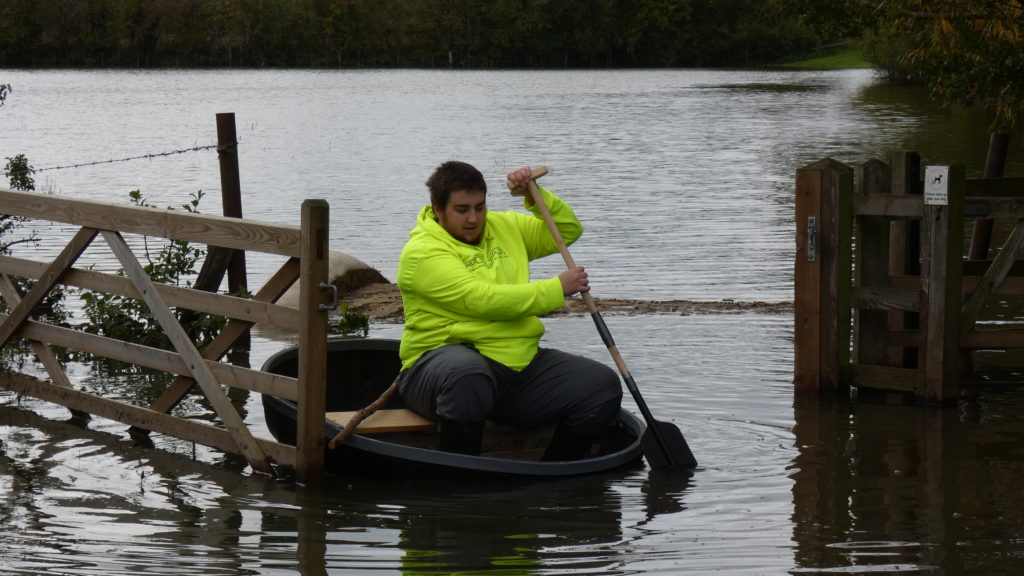
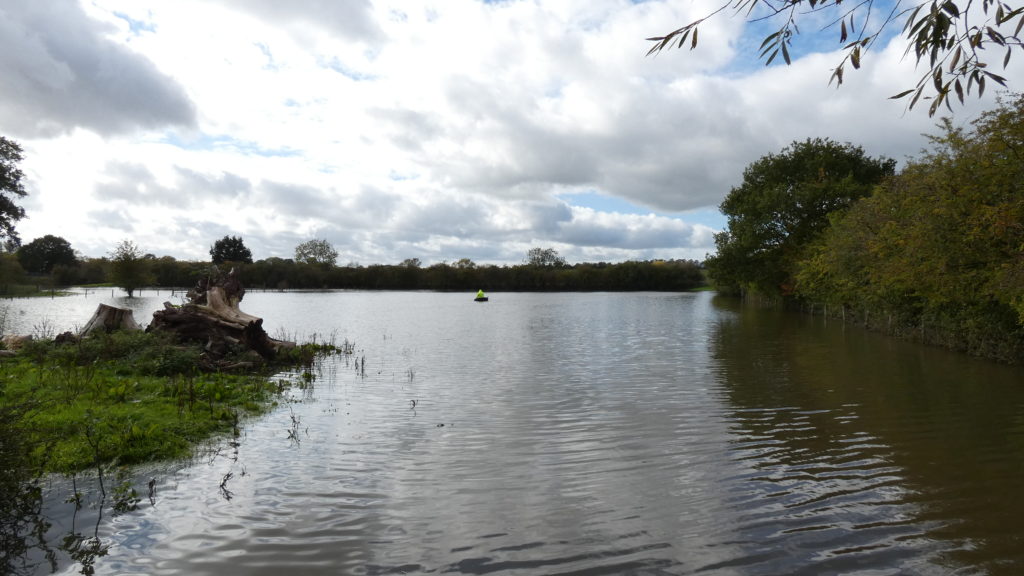
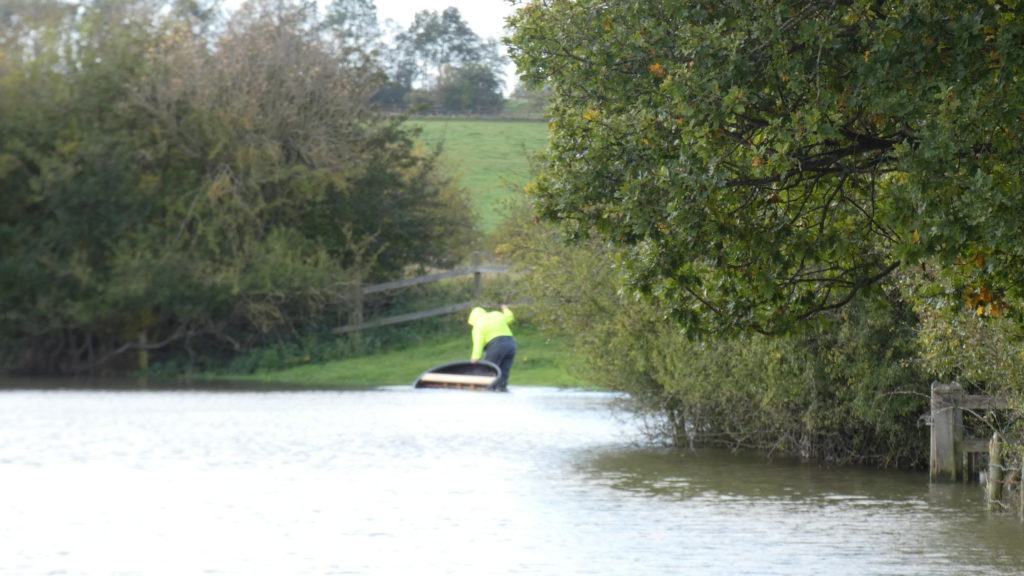
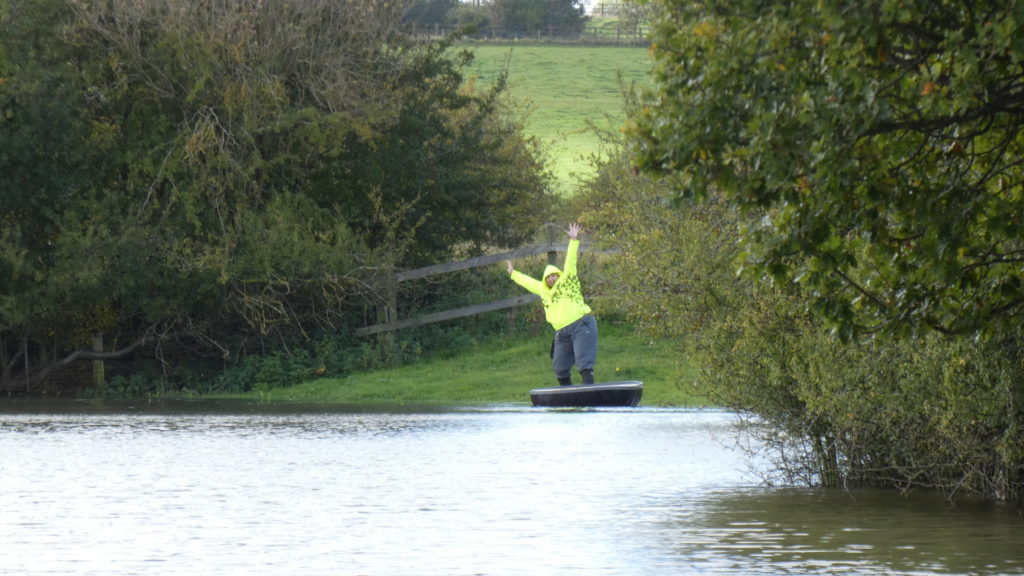
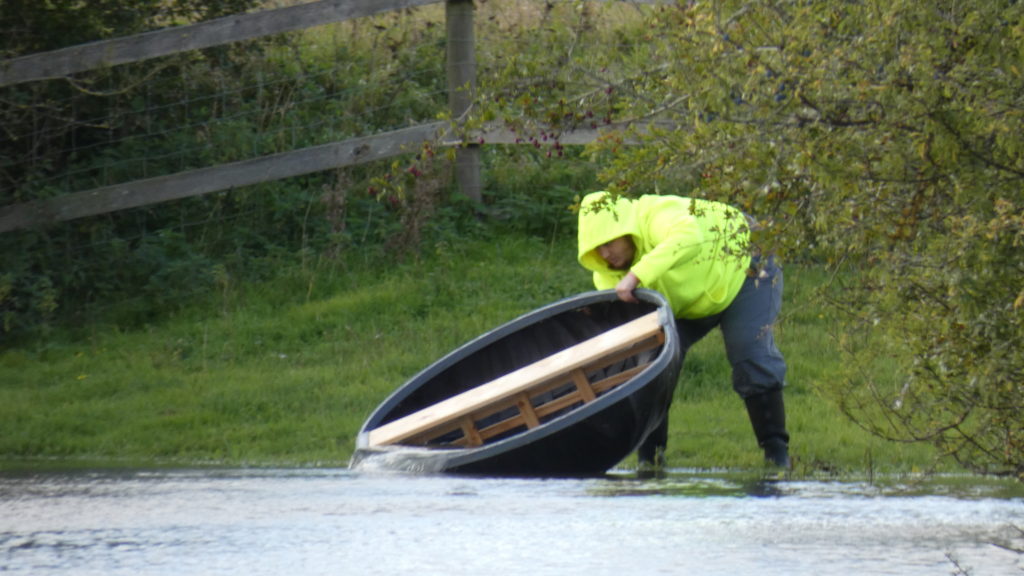
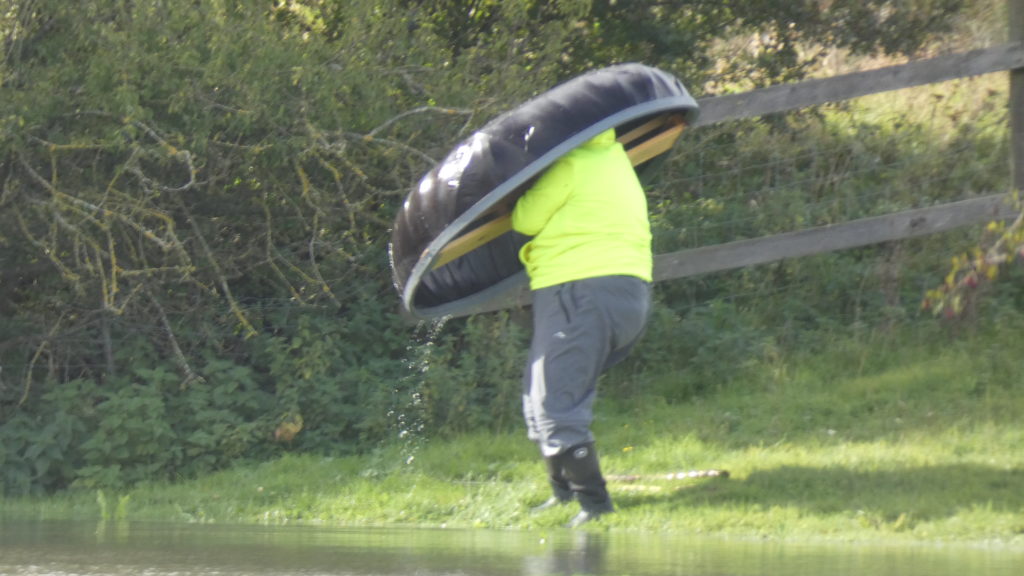
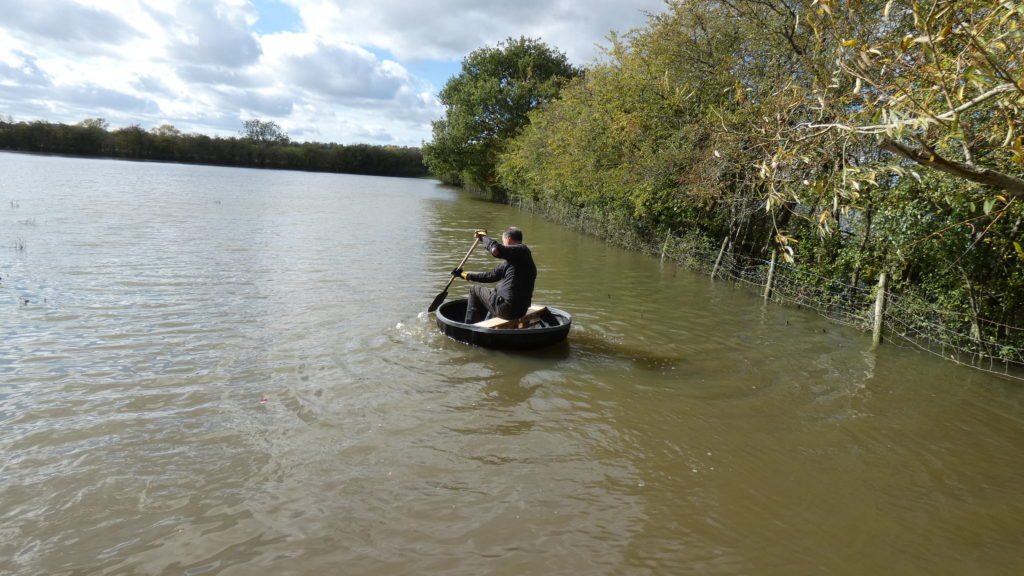
I had a go and alternated between feeling I’d got the hang of paddling, and completely losing it again! Then the wind blew me into a tree..so I didn’t get as far out but I will persevere. More rain is forecast tonight, but I won’t go out until we have a happy confluence of flood water, dry weather and light winds.
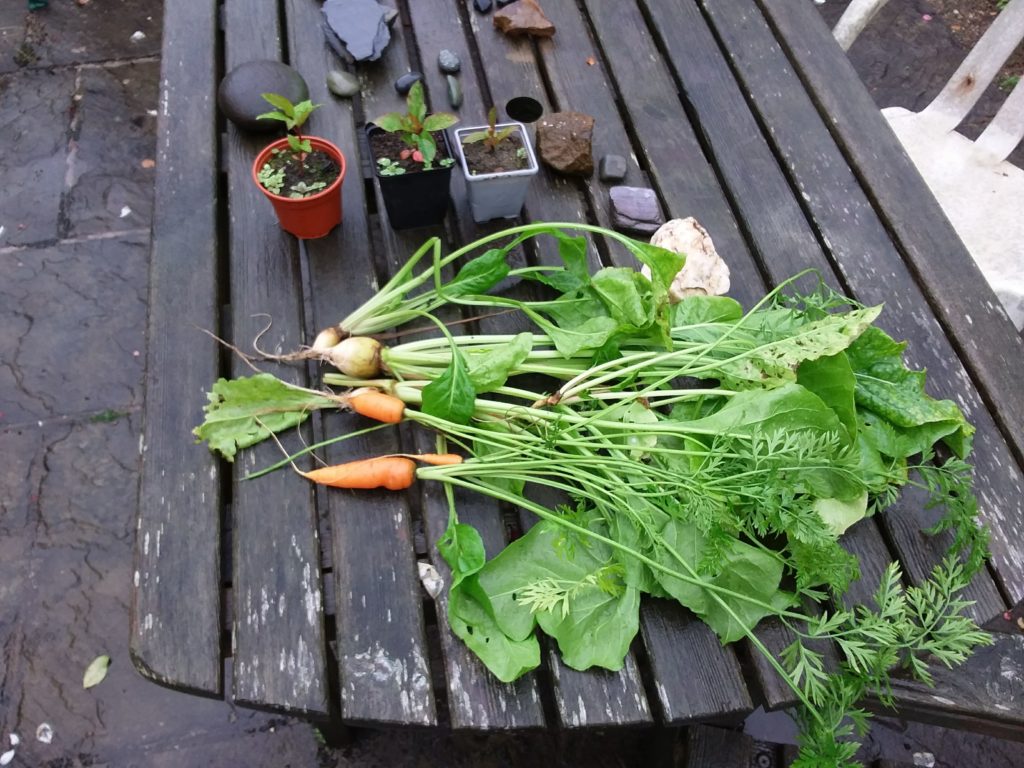
The three Braeburn apple seedlings are doing well in what has begun as a mild, wet October. I planted white beetroot and small carrots in a raised bed in July, and we are getting some harvest! They were very little trouble and taste good.
Today’s great excitement is I HAVE A CORACLE!!! After 4 years of watching the flood waters rise on Lake Meadow, with just one trip around it rowing an inflatable dinghy, I lucked out this weekend. The rain fell steadily for three days and my mind turned coraclewards – and on Ebay, I found a coracle that ticked all my boxes. It was made in a workshop and used in an Ironbridge Regatta, I think in 2018, but the owner is downsizing and wanted to find a home for it. He was even willing to transport it here on the roof of his car in exchange for fuel money, which was defiantly A and B the C of D. Everything came together and my coracle arrived on a mild day with the flood waters about as high as I’ve seen them.

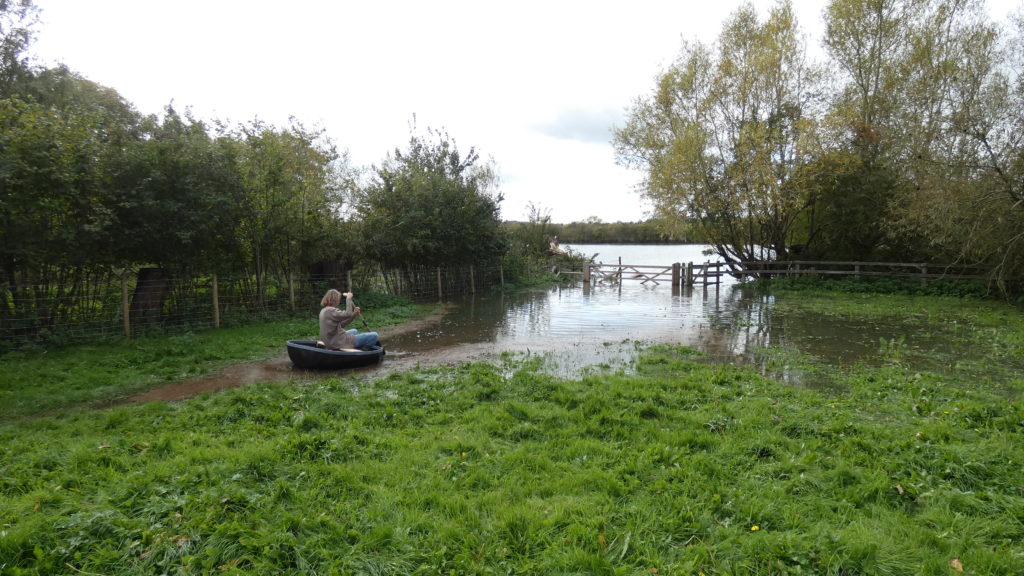
The first challenge was getting in with no jetty. Fortunately my first idea, to sit on the bench and then lift my feet in, worked really well.
Paddling is hard work, you have to pull yourself forward while also directing the water to one side of the boat or the other. And she was very good at going round and round, but not so keen on going forwards. As soon as I stopped paddling, back I’d blow to the shallow bit…The wind was blowing westerly which was a good thing really, as it pushed me back to land instead of out into the wild open sea (meadow).
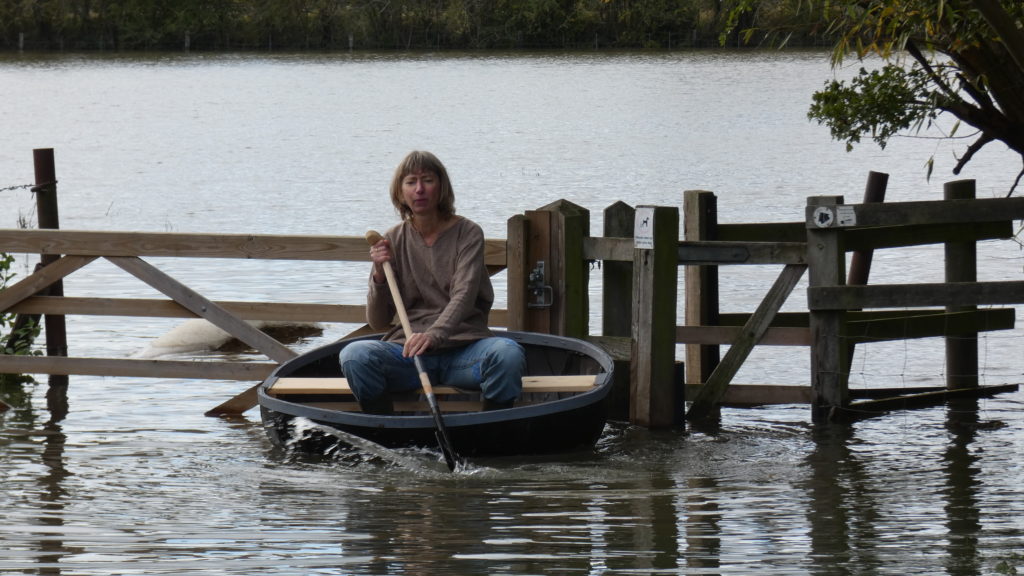
Al gave my boat a good push out each time, and eventually I made it to the gate. Don’t heed the scowl, that’s just my concentrating face. I was having a lot of fun!
A boat needs a name, and Bootle-Bumtrinket seems appropriate.
Eventually, I couldn’t resist opening the gate. B-BT is surprisingly stable, and it wasn’t too hard to get the gate open and turn my face to the open sea – with attendant sea monster.
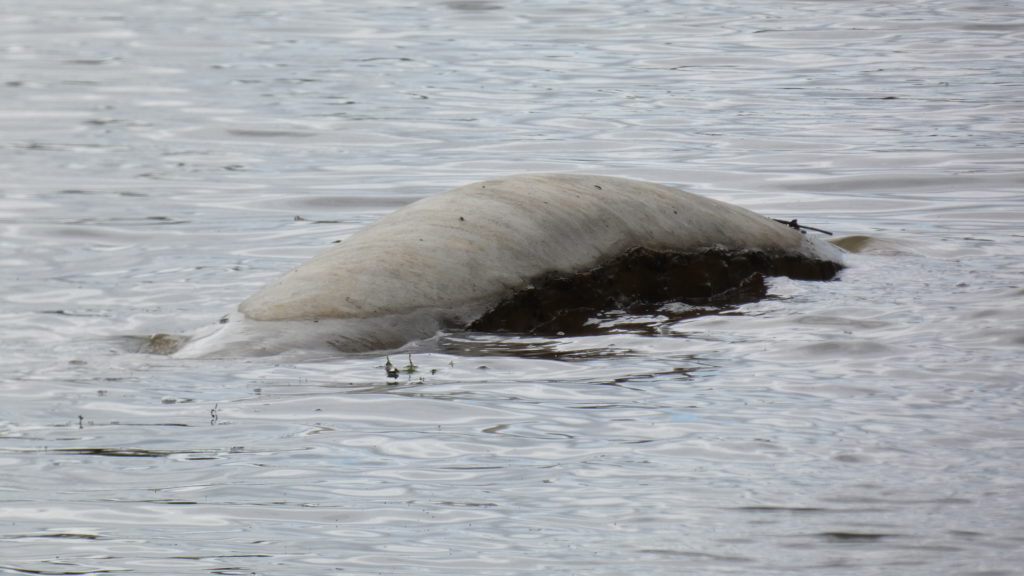
Well, actually it’s the parapet of the bridge, the surface of which was just too deep to want to walk on but too shallow for the boat to go over. And with the wind, and a work meeting coming up, I decided I’d done enough for one day and let the wind blow me back to shore. Then I had to paddle out again to close the gate, which is tricky from a coracle.
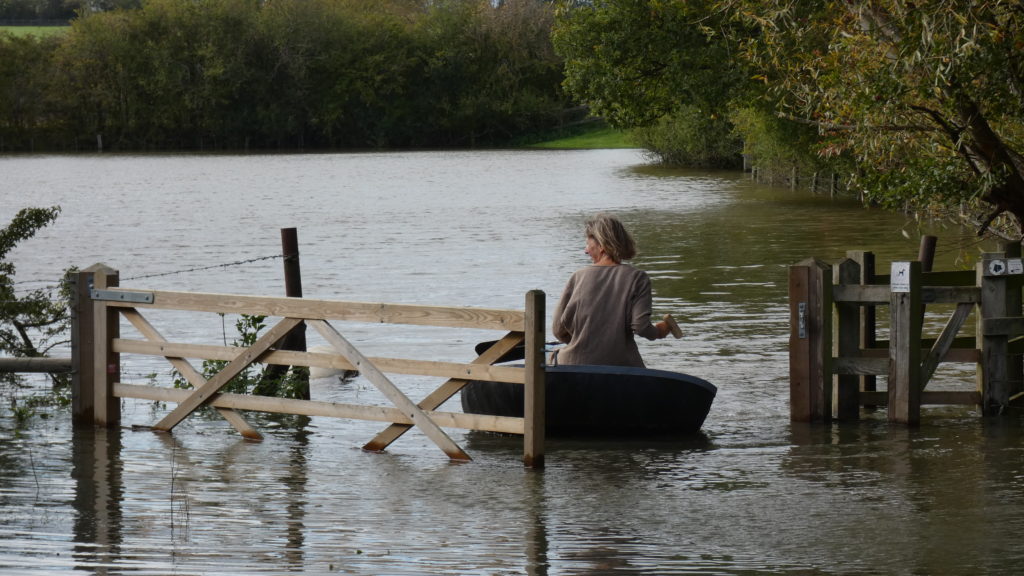
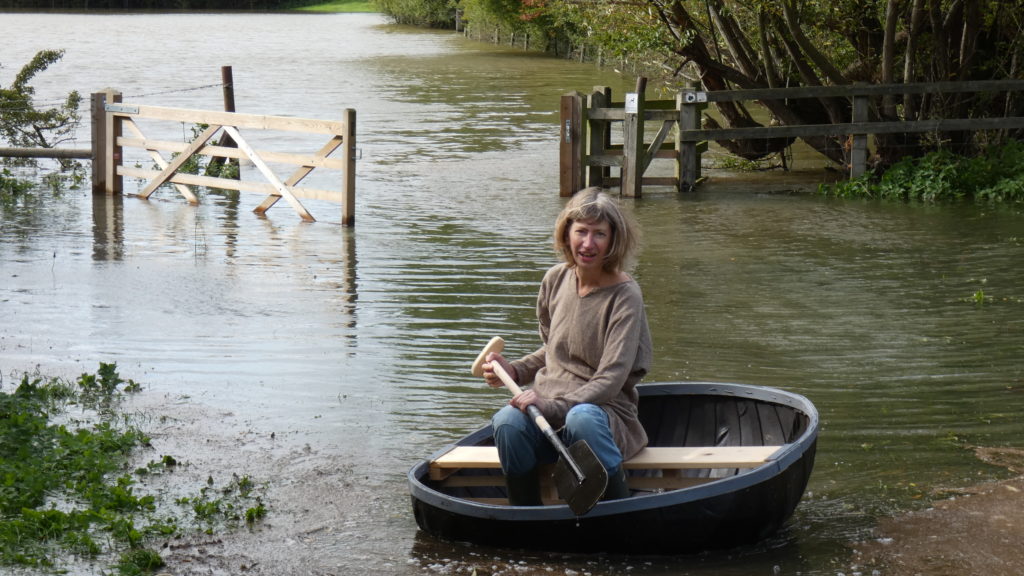
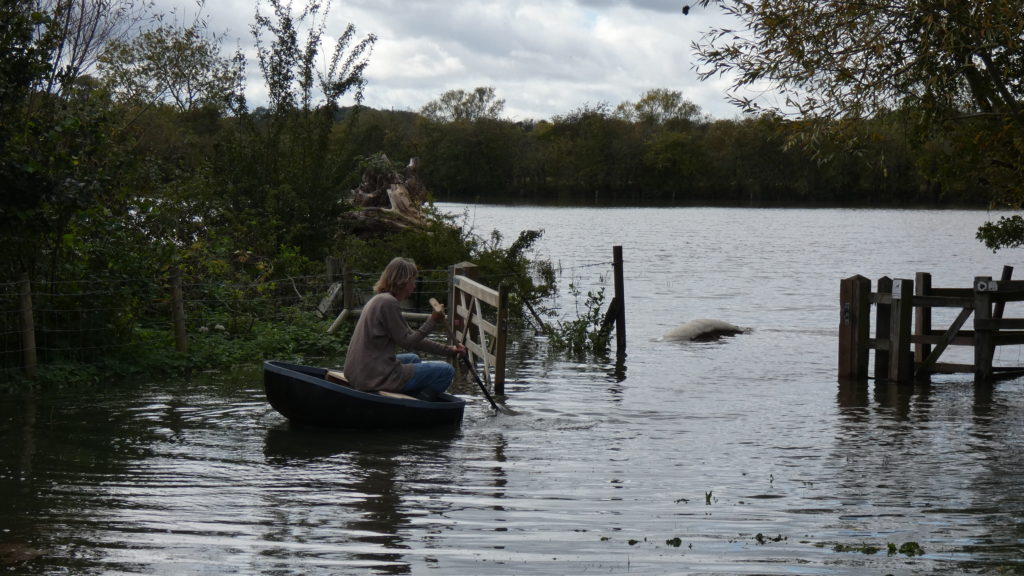
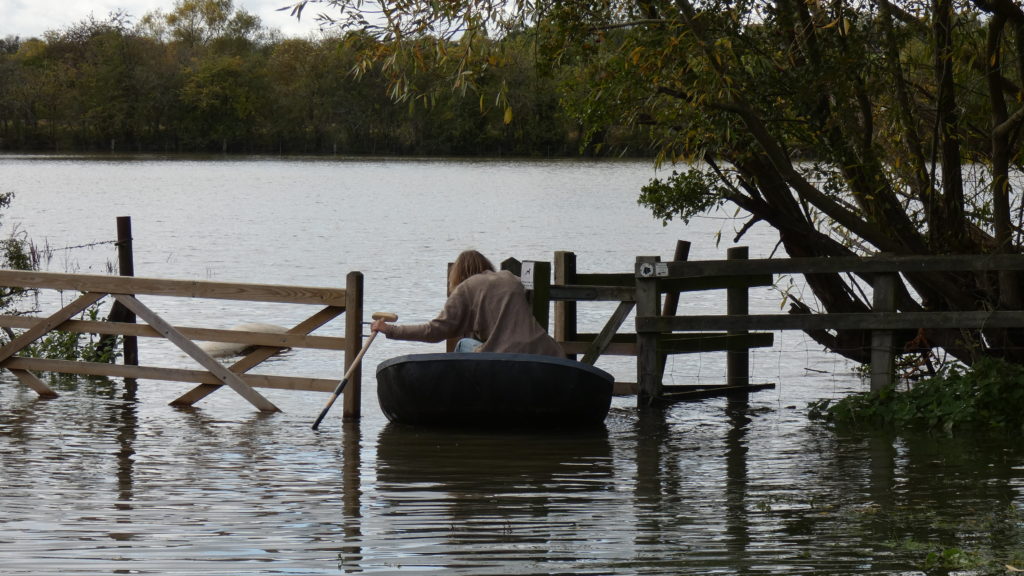
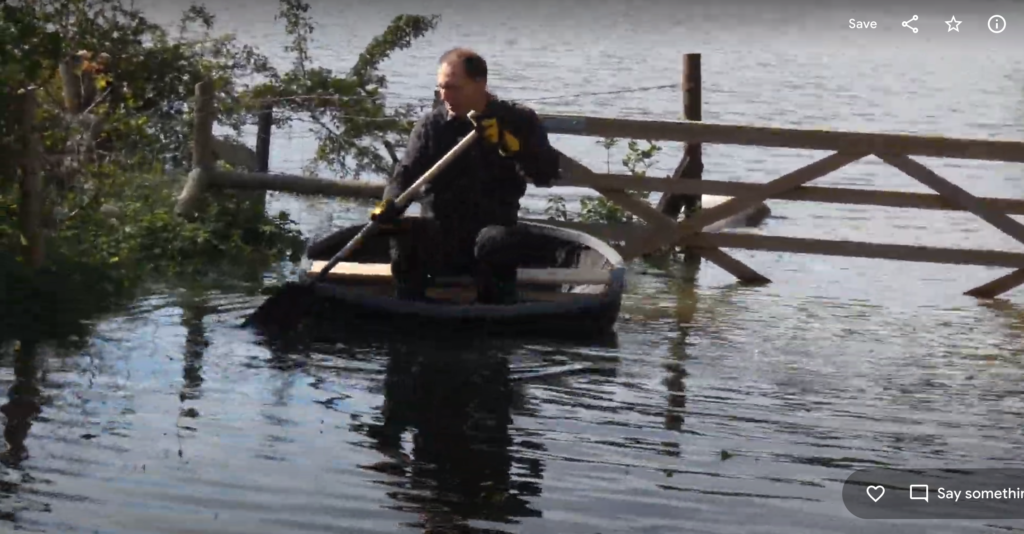
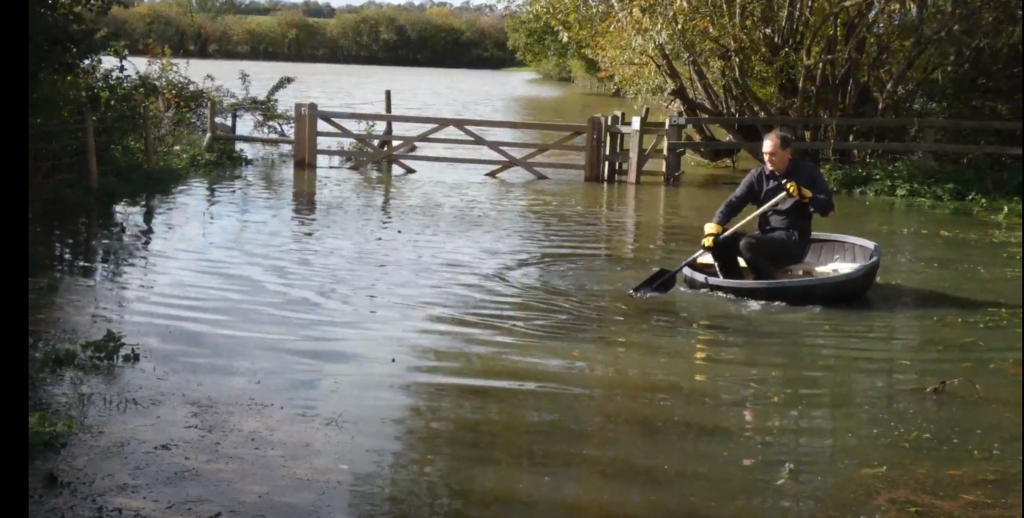
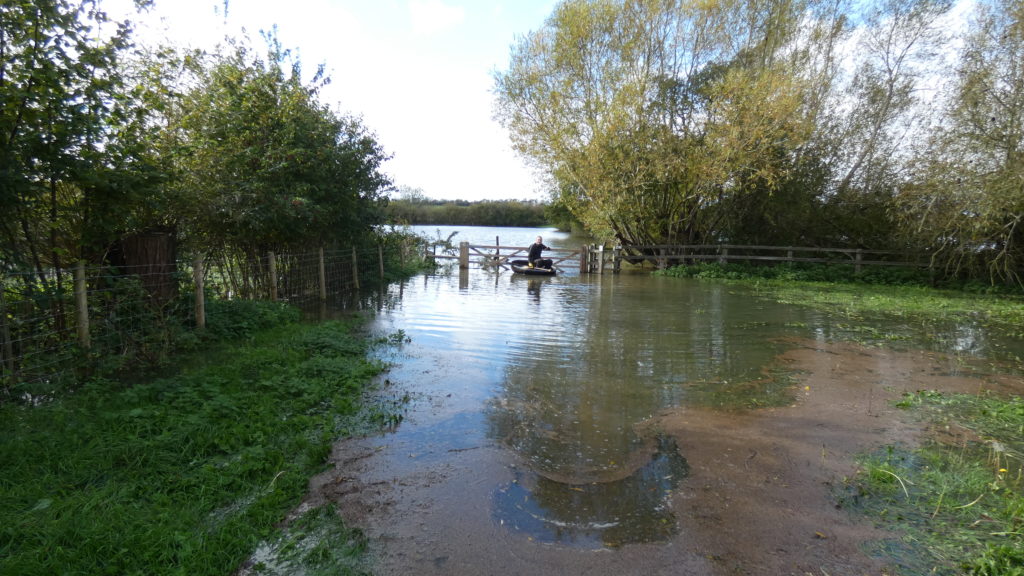
The paddle looks like it’s cracked and been bodged up with gaffer tape, so we should make a new one – probably using a spare spear shaft. The paddle is invaluable for pushing along where the water is too deep to paddle effectively, and also with a second paddle we could try having two (smallish) people in the boat. A pole would be a useful thing to carry, for pushing hard / punting without risking the fragile paddle.
I should probably also give her a new coat of bitumen paint. Otherwise B-BT seems sound and is a lot of fun.
So there you go! The nuns of Rumwoldstow can now go fishing. Perhaps I need a new character, some male servant or young monk who does the fishing, as I’m not keen to wear my long wool dress in the coracle.